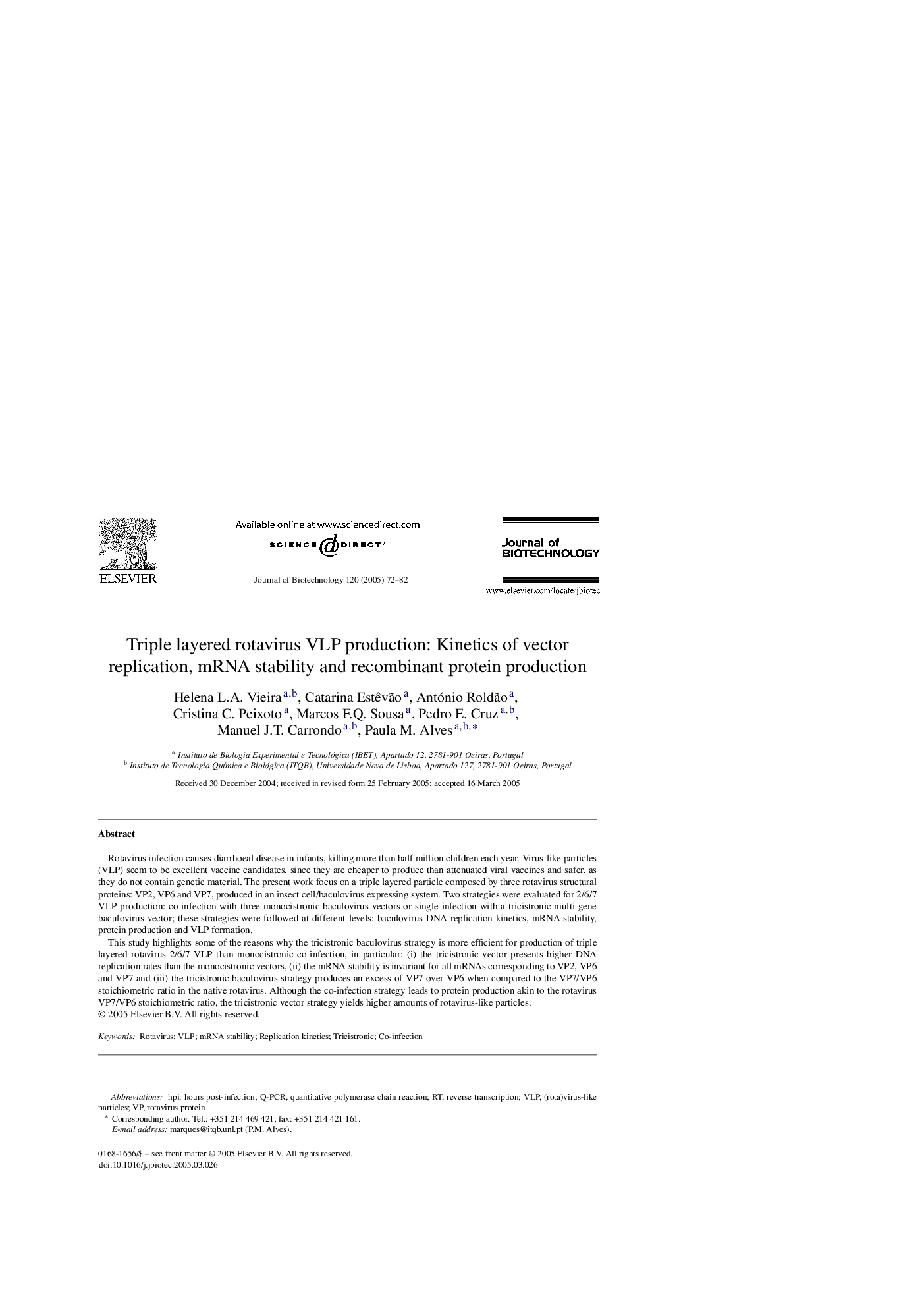| Article ID | Journal | Published Year | Pages | File Type |
|---|---|---|---|---|
| 9604259 | Journal of Biotechnology | 2005 | 11 Pages |
Abstract
This study highlights some of the reasons why the tricistronic baculovirus strategy is more efficient for production of triple layered rotavirus 2/6/7 VLP than monocistronic co-infection, in particular: (i) the tricistronic vector presents higher DNA replication rates than the monocistronic vectors, (ii) the mRNA stability is invariant for all mRNAs corresponding to VP2, VP6 and VP7 and (iii) the tricistronic baculovirus strategy produces an excess of VP7 over VP6 when compared to the VP7/VP6 stoichiometric ratio in the native rotavirus. Although the co-infection strategy leads to protein production akin to the rotavirus VP7/VP6 stoichiometric ratio, the tricistronic vector strategy yields higher amounts of rotavirus-like particles.
Keywords
Related Topics
Physical Sciences and Engineering
Chemical Engineering
Bioengineering
Authors
Helena L.A. Vieira, Catarina Estêvão, António Roldão, Cristina C. Peixoto, Marcos F.Q. Sousa, Pedro E. Cruz, Manuel J.T. Carrondo, Paula M. Alves,
